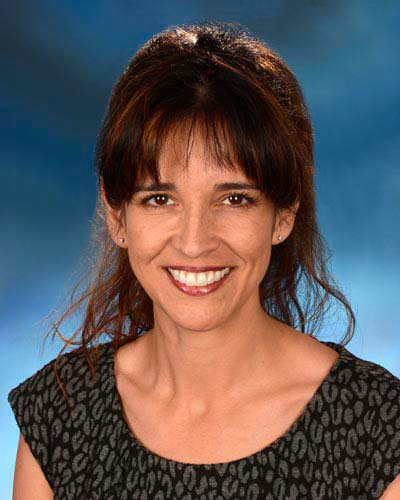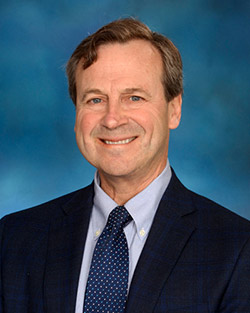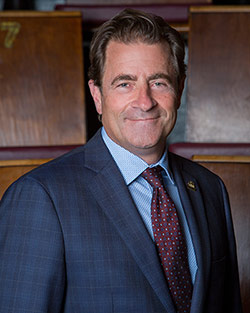April 13, 2023 | Deborah Kotz
UM School of Medicine Clinical Trial Found Patients Who Knowingly Took Placebos Were More Likely to Stay on Methadone and Had Improved Sleep
Substance use disorder affects 20 million Americans, and more than 100,000 people died from a drug overdose in 2021, according to the Centers for Disease Control and Prevention. While the medication methadone has the strongest evidence-based effectiveness to prevent relapse, about half of patients drop out of their treatment within one year of initiation. The solution could lie in taking a simple “sugar pill” or placebo along with the methadone, according to a randomized clinical trial led by researchers at the University of Maryland School of Medicine.

To conduct the study, the researchers enrolled 131 patients seeking new treatment for moderate-to-severe opioid use disorder. They were randomly selected to receive methadone (which needs to be dispensed daily in a clinic) along with a placebo pill or just the standard treatment of methadone. Patients selected for the placebo group were told they would be put on a placebo along with the methadone and were initially informed about studies showing the possible benefits of taking placebos to relieve symptoms such as pain and depressed mood. Clinicians in the study were not told which patients were taking placebos and which were getting the methadone alone.
After three months of follow-up, 78 percent of the placebo-treated group remained on methadone, compared to 61 percent of the group that did not receive a placebo. The placebo group also reported better sleep quality.
"The clinical implications of our intervention have great potential impact, as retention in treatment is a serious challenge for the field of addiction medicine,” said Dr. Belcher. “We’ve demonstrated it’s feasible to administer a placebo in addition to standard-of-care methadone in a community-based opioid treatment setting without adding a significant burden to clinic procedures; the low-cost, low-risk nature of this intervention could provide an appealing strategy to target early methadone treatment adherence.”
Of the available federally-approved medications that are prescribed to treat opioid use disorder, methadone possesses the largest evidence base for long-term positive treatment outcomes, including decreased drug use, decreased crime and increased positive health outcomes. The medication can also cause side effects, like constipation and nausea; it also requires patients to come to a clinic each day to get their dose from a medical provider.

It has long been assumed that deception or concealment is necessary for placebo effects to work -- such as “tricking” a patient into believing an inert pill contains an active medication. But a growing body of evidence has found that placebos work even when patients know they are taking them. For example, a Beth Israel Deaconess Medical Center (BIDMC) clinical trial published in 2021 found that patients with irritable bowel syndrome who were knowingly treated with a placebo had a significant reduction in their gastrointestinal symptoms.
“Previous assumptions that placebo treatment needs concealment or deception to ‘work’ are not true,” said study senior author Ted Kaptchuk, director of the Program in Placebo Studies and the Therapeutic Encounter at BIDMC and professor of medicine at Harvard Medical School. “Additionally, there is growing evidence that open-label placebo demonstrates similar neurotransmitter engagement to double-blind and deceptive placebos. It is important to note that a patient-clinician relationship is an important component of open-label placebo.”
UMSOM faculty members Emerson M. Wickwire, PhD, Professor of Psychiatry, Aaron D. Greenblatt, MD, Assistant Professor of Family & Community Medicine, and Laurence Magder, PhD, Professor of Epidemiology & Public Health, were co-authors on this study. Faculty at University of Maryland, Baltimore’s School of Pharmacy and School of Nursing were also involved in this study, as were faculty at the University of Maryland, College Park. Other co-authors included those from the National Institute on Drug Abuse and the NYU Grossman School of Medicine.

This work was supported by the Foundation for the Science of the Therapeutic Encounter; the University of Maryland MPowering the State Opioid Use Disorders Initiative; the University of Maryland, Baltimore, Institute, for Clinical & Translational Research (ICTR); the National Center for Advancing Translational Sciences (NCATS) Clinical Translational Science Award (CTSA) (grant number 1UL1TR003098.)
About the University of Maryland School of Medicine
Now in its third century, the University of Maryland School of Medicine was chartered in 1807 as the first public medical school in the United States. It continues today as one of the fastest growing, top-tier biomedical research enterprises in the world -- with 46 academic departments, centers, institutes, and programs, and a faculty of more than 3,000 physicians, scientists, and allied health professionals, including members of the National Academy of Medicine and the National Academy of Sciences, and a distinguished two-time winner of the Albert E. Lasker Award in Medical Research. With an operating budget of more than $1.3 billion, the School of Medicine works closely in partnership with the University of Maryland Medical Center and Medical System to provide research-intensive, academic, and clinically based care for nearly 2 million patients each year. The School of Medicine has nearly $600 million in extramural funding, with most of its academic departments highly ranked among all medical schools in the nation in research funding. As one of the seven professional schools that make up the University of Maryland, Baltimore campus, the School of Medicine has a total population of nearly 9,000 faculty and staff, including 2,500 students, trainees, residents, and fellows. The combined School of Medicine and Medical System (“University of Maryland Medicine”) has an annual budget of over $6 billion and an economic impact of nearly $20 billion on the state and local community. The School of Medicine, which ranks as the 8th highest among public medical schools in research productivity (according to the Association of American Medical Colleges profile) is an innovator in translational medicine, with 606 active patents and 52 start-up companies. In the latest U.S. News & World Report ranking of the Best Medical Schools, published in 2021, the UM School of Medicine is ranked #9 among the 92 public medical schools in the U.S., and in the top 15 percent (#27) of all 192 public and private U.S. medical schools. The School of Medicine works locally, nationally, and globally, with research and treatment facilities in 36 countries around the world. Visit medschool.umaryland.edu
Contact
Deborah Kotz
Senior Director of Media Relations
Office of Public Affairs & Communications
University of Maryland School of Medicine
Email: DKotz@som.umaryland.edu
o: 410-706-4255
c: 410-804-0054
t: @debkotz2
